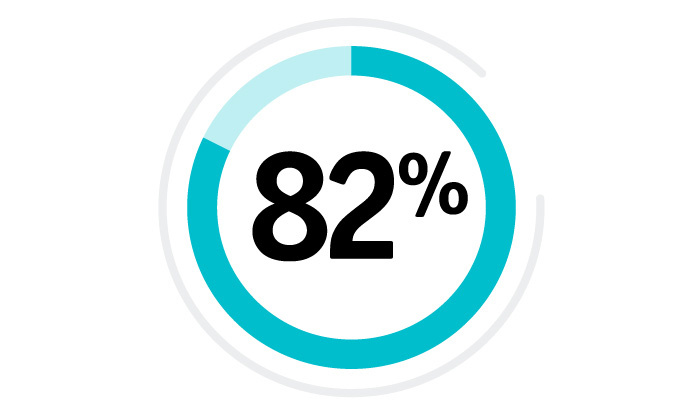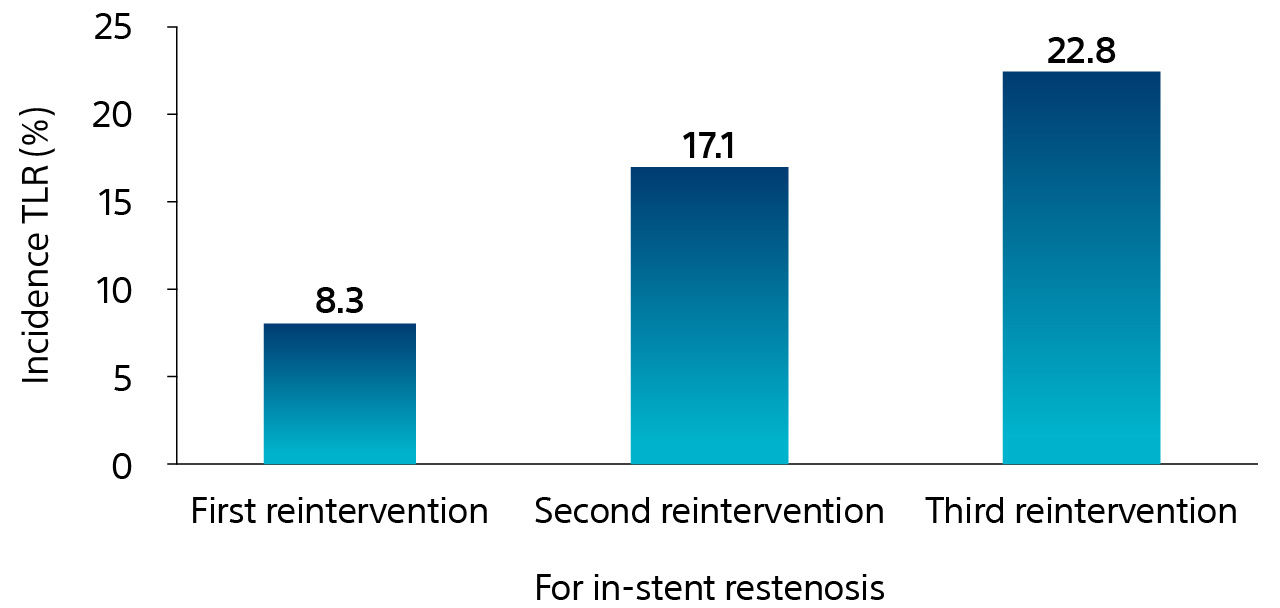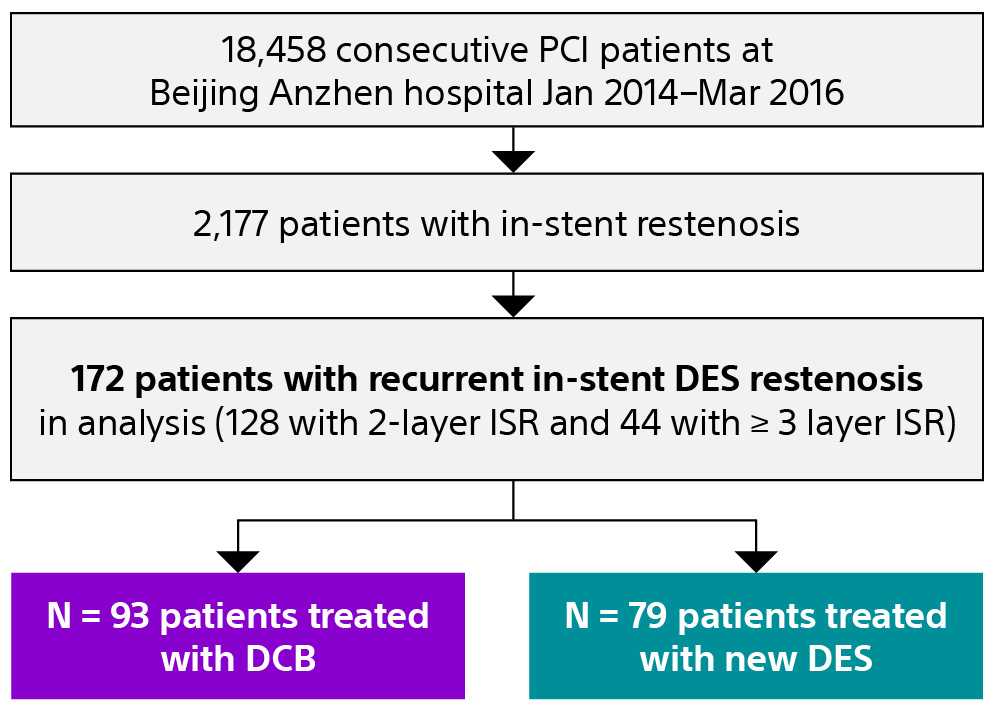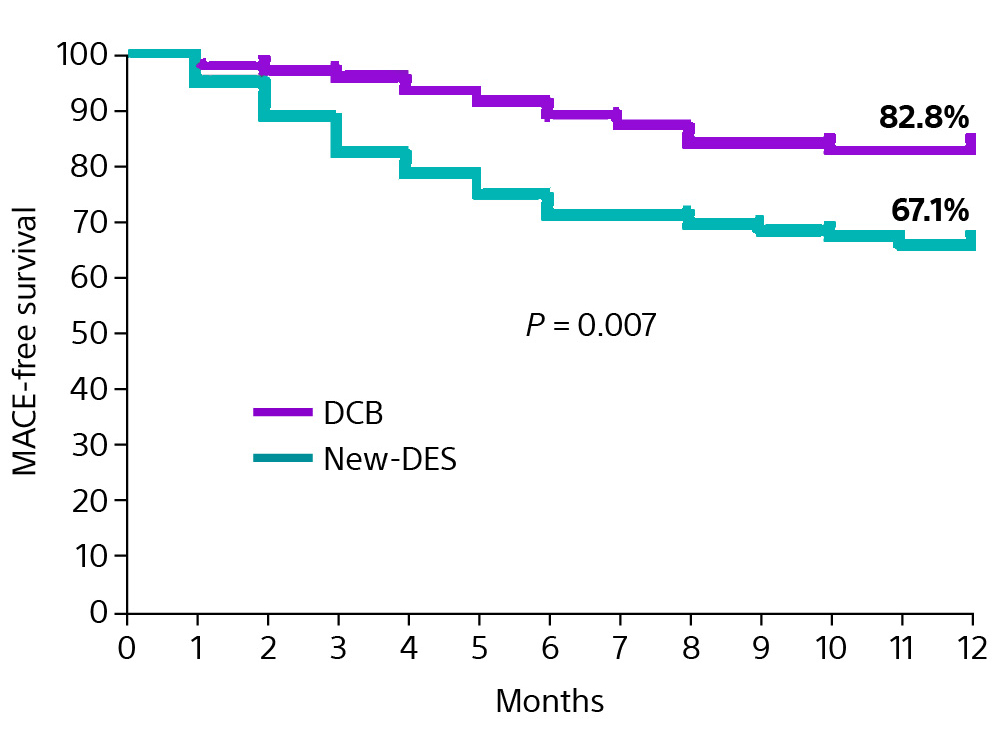Boston Scientific accounts are for healthcare professionals only.
Effectively treat ISR with Coronary DCBs
Current treatment options for in-stent restenosis (ISR) can be challenging. There is a demand for enhanced therapies that avoid additional metal layers, reduce the need for prolonged dual antiplatelet therapy (DAPT), and provide better long-term outcomes for patients. Drug-coated balloons are an effective and globally recognized treatment option for ISR, supported by extensive clinical evidence, offering superior outcomes compared to repeat stenting.
Expanding ISR options
Approximately 10% of PCIs are performed to treat ISR.1 Current treatment options for ISR include layering of additional stents, balloon angioplasty or radiation, all of which introduce potential risks for patients. Additional options enable physicians to find a trusted treatment for every lesion.
ISR remains the leading cause of repeat PCI in the U.S.3

Currently 82% of patients with ISR receive another stent1, which is associated with a higher risk of target lesion revascularization.4
Repeat intervention associated with higher risk of target revascularization (TLR)4

DCBs provide a new option for PCI
Drug design
Targeted antiproliferative drug delivery designed to reduce the rate of restenosis without introducing an additional metallic layer.
Anticipated benefits
Avoids additional layers of metal
- Reducing potential complication, including fracture, malapposition, and thrombosis5
May enable future treatment options
- For lifetime patient management by leaving no metal behind
May reduce duration of DAPT
- May result in reduced rate of medication-related bleeding complications6
Proven ISR treatment
Drug-coated balloons are an effective and proven ISR treatment with an established global footprint.
Paclitaxel DCB vs. repeat stenting for recurrent ISR
Statistically superior MACE-free survival rate with DCB at 1 year.
Study flow8

MACE-free survival8

Primary endpoint: MACE—a composite CV death, nonfatal MI, ischemia-driven TLR, and stent thrombosis at 1 year.
Global DCB clinical practice guidelines
DCBs are a global standard of care for patients with ISR. The European Society of Cardiology (ESC) for myocardial revascularization recommends drug-coated balloons with its highest class of evidence for the treatment of in-stent restenosis of biolimus-eluting stents (BES) and drug-eluting stents (DES).
2018 ESC/EACTS Guidelines for ISR

Talk to a rep
Fill out a short form and one of our sales representatives will be in touch with you.
Receive updates
Stay informed on the latest advancements in DCBs and Drug-Eluting Stents (DES).
References:
1. Moussa ID, Mohananey D, Saucedo J, et al. Trends and outcomes of restenosis after coronary stent implantation in the United States. J Am Coll Cardiol. 2020;76:1521–1531.
2. Alfonso F, Coughlan J, Giacoppo D, Kastrati A, Byrne RA. Management of in-stent restenosis. EuroIntervention: Journal of EuroPCR in Collaboration with the Working Group on Interventional Cardiology of the European Society of Cardiology. 2022;18(2):e103–e123.
3. Stolker JM, Cohen DJ, Kennedy KF, et al. Evaluation of Drug-Eluting Stents and Ischemic Events (EVENT) Investigators. Repeat revascularization after contemporary percutaneous coronary intervention: an evaluation of staged, target lesion, and other unplanned revascularization procedures during the first year. Circ Cardiovasc Interv. 2012;5(6):772–782.
4. Kastrati A, Cassese S. In-stent restenosis in the United States: time to enrich its treatment armamentarium. J Am Coll Cardiol. 2020;76(13):1532–1535.
5. Siontis GCM, Stefanini GG, Mavridis D, et al. Percutaneous coronary interventional strategies for treatment of in stent restenosis: a network meta analysis. Lancet. 2015;386(9994):655–664.
6. Alfonso F, Coughlan J, Giacoppo D, Kastrati A, Byrne RA. Management of in-stent restenosis. EuroIntervention: Journal of EuroPCR in Collaboration with the Working Group on Interventional Cardiology of the European Society of Cardiology. 2022;18(2):e103–e123.
7. Market Data on file at BSC as of July 2023.
8. Wang G, et al. Comparison of drug-eluting balloon with repeat drug-eluting stent for recurrent drug-eluting stent in-stent restenosis. Coron Artery Dis. 2019;30(7):473–480.
9. Neumann, FJ, et al. European heart journal 40.2 (2019): 87-165.
10. Jeger. R., et al. Cardiovascular Interventions 12.12 (2020): 1391-1402.
Please review the AGENT Brief Summary for full instructions on use.
